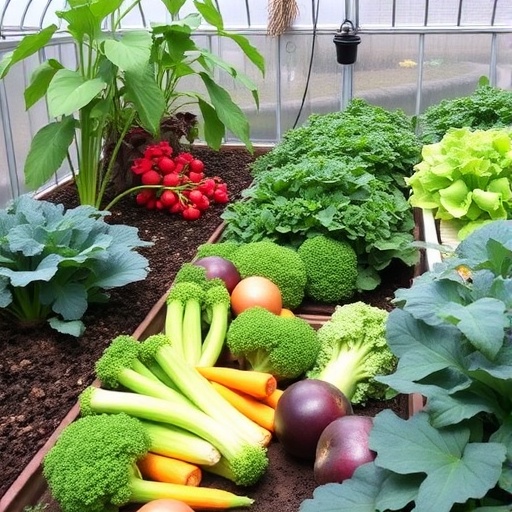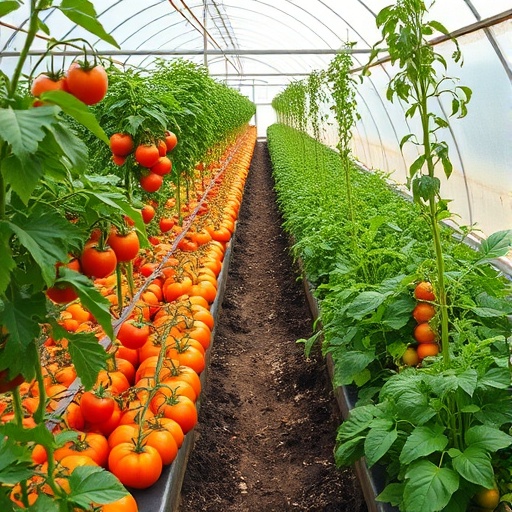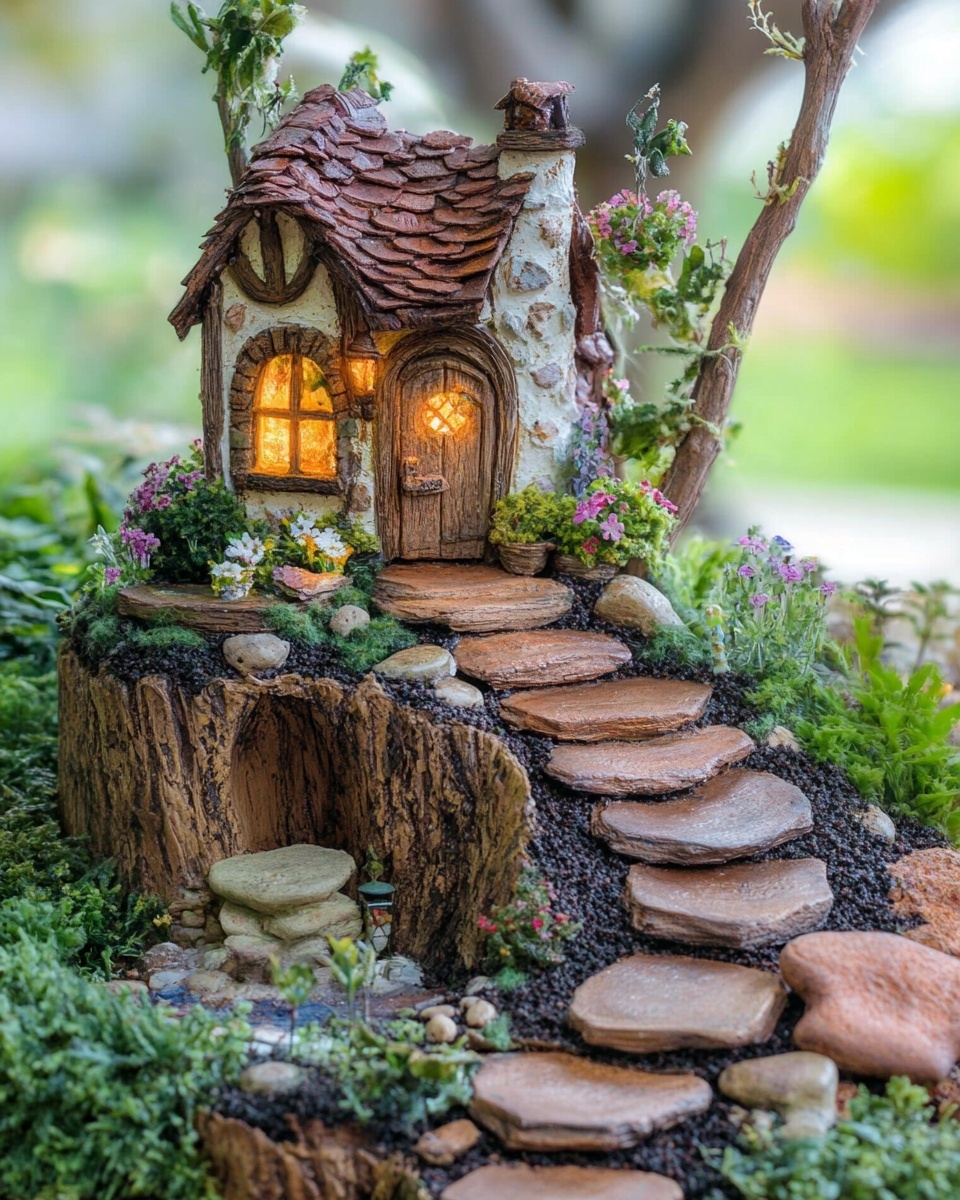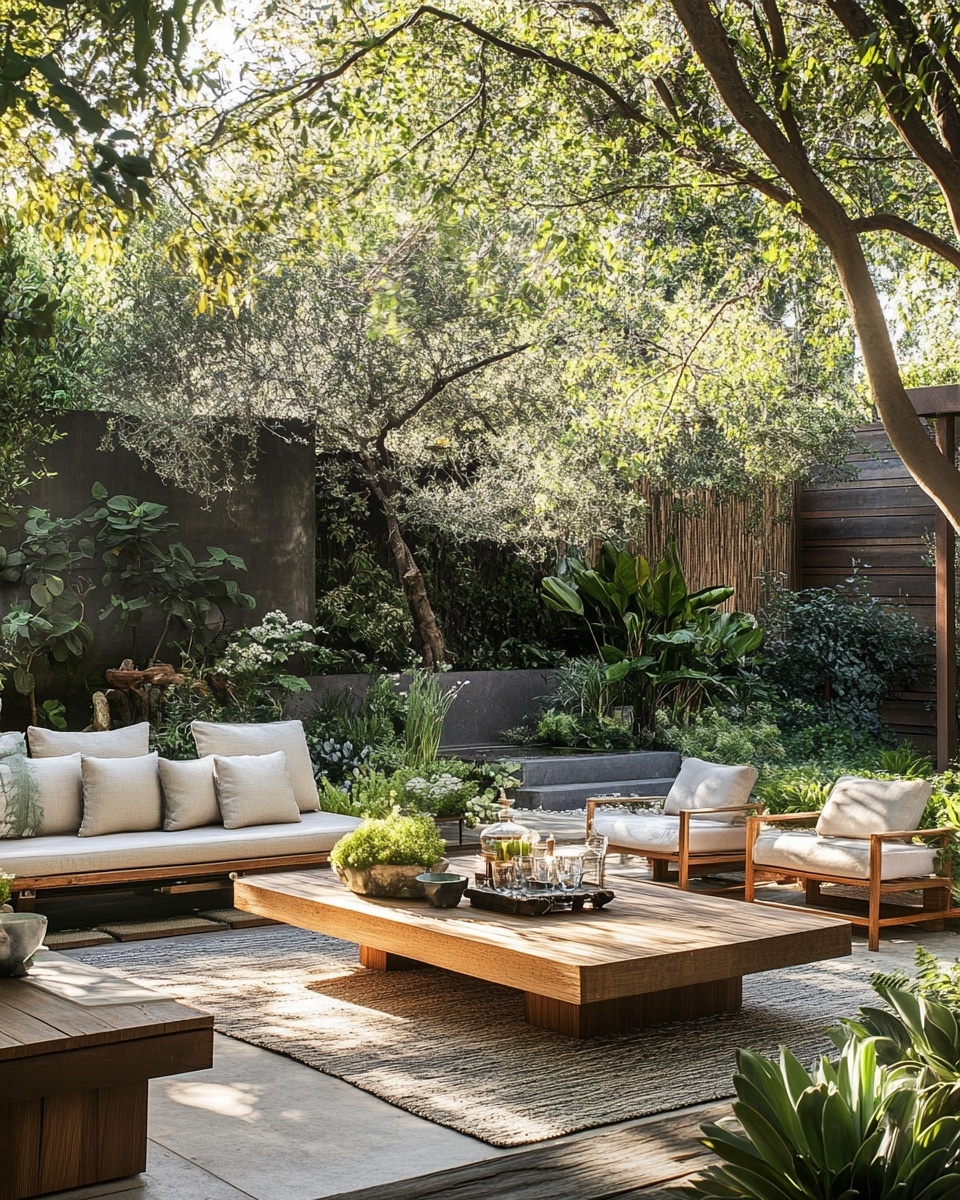Introduction
Did you know that in controlled environments, some vegetables can grow up to 50% faster and yield 3x more than their outdoor counterparts? This isn't just a gardener's dream; it's the tangible reality of cultivating crops in a greenhouse. If you've ever yearned to extend your growing season, battle erratic weather, or simply want to grow vegetables with unparalleled success, venturing into greenhouse gardening is your golden ticket. Forget the limitations of frost dates and sudden droughts; a greenhouse offers a sanctuary where your plants can thrive, producing bountiful harvests year-round. This comprehensive guide will walk you through everything you need to know to establish your verdant haven and enjoy the freshest produce right from your backyard.
Tools & Materials Needed
To embark on your greenhouse gardening journey, having the right tools and materials is crucial. Think of these as your paintbrush and canvas for creating a miniature agricultural masterpiece.
- Greenhouse Structure: This is your primary investment. Options range from small cold frames to elaborate polycarbonate or glass structures. Consider size based on your available space and ambition. Look for models with good ventilation.
- Seedling Trays & Pots: Essential for starting seeds indoors before transplanting. Biodegradable pots made from peat or coir are excellent eco-friendly choices as they reduce transplant shock and break down in the soil.
- Good Quality Potting Mix: A sterile, well-draining mix is vital for healthy root development. Look for organic options. For budget-friendly alternatives, you can blend your own with compost, perlite, and coconut coir.
- Worm Castings or Organic Compost: These act as natural fertilizers, enriching your soil and providing essential nutrients.
- Hand Trowel & Cultivator: For planting, weeding, and mixing soil.
- Watering Can or Hose with a Gentle Sprayer: Consistent moisture is key. A watering wand can help reach plants in deeper beds without oversoaking.
- Plant Labels: Don't underestimate these! You'll quickly forget what's what. Recycled plastic yogurt containers cut into strips work perfectly.
- Thermometer/Hygrometer: To monitor temperature and humidity levels inside your greenhouse, which are critical for optimal plant growth.
- Pruning Shears: For maintaining plant health, encouraging bushier growth, and harvesting.
- Gardening Gloves: Protect your hands from dirt and thorns.
Time & Effort Overview
Greenhouse gardening, while incredibly rewarding, does require a commitment of time and effort. Setting up your greenhouse initially will take the most significant chunk of time, typically a few days for a DIY kit or even a few weeks if you're building from scratch. Once established, the daily and weekly maintenance is surprisingly manageable.
- Initial Setup: 1-3 days for a pre-fabricated kit, longer for custom builds.
- Planting: 2-4 hours per planting cycle, depending on the number of plants.
- Daily Maintenance: 15-30 minutes for checking temperature, watering, and quick observations.
- Weekly Maintenance: 1-2 hours for pruning, pest checks, fertilizing, and harvesting.
- Monthly Maintenance: 2-3 hours for cleaning, soil amendments, and preparing for new crops.
Compared to outdoor gardening, greenhouse vegetables often grow vegetables 30% faster due to consistent temperature and humidity. The difficulty level is beginner-friendly, especially if you start with robust, easy-to-grow varieties. The enclosed environment means fewer battles with external pests and unpredictable weather, allowing you to focus on nurturing your plants.
Planning Your Layout

Before you even touch soil, visualize your greenhouse space. Consider pathways, raised beds or shelving for pots, and how sunlight will fall. Good planning ensures efficient use of space and ease of access. Sketch it out! This is like drawing a blueprint for your green sanctuary.
Soil Preparation
The foundation of any successful garden is healthy soil. For greenhouse growing, you'll likely use raised beds or containers. Fill these with a high-quality potting mix blended with a generous amount of organic compost. A good starting ratio is 70% potting mix to 30% compost. This provides essential nutrients and ensures excellent drainage. Don't worry if your first mix isn't perfect; you can always amend it later.
Seed Starting or Transplanting
Depending on your chosen vegetables, you’ll either direct-sow seeds or transplant seedlings. For most greenhouse vegetables, starting seeds in trays gives them a head start. Plant seeds at the depth recommended on their packets – usually two to three times their width. Once seedlings have developed two sets of true leaves, they're ready for transplanting into their final spots. Be gentle with delicate roots!
Proper Spacing
Give your plants room to breathe and grow. Overcrowding leads to poor air circulation, increased disease risk, and reduced yields. Follow spacing guidelines on seed packets or plant tags. For example, tomatoes need at least 2 feet between plants, while lettuce can be planted closer.
Watering Judiciously
Consistent moisture is crucial. Water deeply and regularly, especially during warm periods. The best practice is to feel the top inch of soil; if it feels dry, it's time to water. Avoid overhead watering, which can encourage fungal diseases. Instead, aim water directly at the base of the plant. Don’t worry if you sometimes overwater! Here's how to fix it: let the soil dry out completely before watering again, and ensure good drainage in your pots.
Support Structures
Many greenhouse vegetables, like tomatoes, cucumbers, and peppers, benefit from support as they grow. Install trellises, stakes, or cages early in the plant’s life to prevent damage once they're heavy with fruit. This also helps with air circulation and keeps fruit off the soil, reducing disease.
Ventilation & Temperature Control
This is where the greenhouse really shines. On sunny days, temperatures can soar. Open vents, doors, or use fans to ensure good airflow and prevent overheating, which can stress plants and inhibit fruit set. Conversely, on cold nights, ensure your greenhouse is sealed, or use a small heater if necessary, to maintain a suitable temperature range (generally 65-80°F for fruiting vegetables).
Growth & Care Tips
Optimizing the growing environment is key to a flourishing greenhouse garden.
- Watering Frequency: Greenhouse plants often require more frequent watering than outdoor plants due to higher temperatures and lower humidity. Check soil moisture daily. A moisture meter can be a useful tool. Aim for consistently moist, but not soggy, soil. Overwatering is a common killer, causing root rot in an estimated 60% of houseplants and similarly impacting greenhouse crops if not managed.
- Sunlight Exposure: Most vegetables need at least 6-8 hours of direct sunlight. Position your greenhouse to maximize sunlight. On scorching days, you might need shade cloth to prevent scorching. Conversely, supplemental lighting can extend growing seasons during shorter winter days.
- Pruning: Remove yellowing leaves, suckers (especially on tomatoes), and lower leaves to improve air circulation and direct the plant's energy into fruit production. For indeterminate tomatoes, pruning suckers can significantly increase yield.
- Fertilization: Greenhouse growing depletes soil nutrients faster. Use a balanced organic fertilizer every 2-4 weeks, or integrate slow-release granular fertilizers. Compost tea or liquid seaweed extracts are excellent for foliar feeding.
- Pest Prevention: The enclosed environment can sometimes be a double-edged sword, harboring pests. Regularly inspect plants for early signs of aphids, spider mites, or whiteflies. Introduce beneficial insects like ladybugs or use organic insecticidal soaps. Good air circulation is a primary defense against fungal diseases.
Eco-Friendly & Sustainable Alternatives
Gardening responsibly benefits both your garden and the planet.
- Composting: Start a compost bin using kitchen scraps and garden waste. This creates rich, free fertilizer and reduces landfill waste.
- Rainwater Harvesting: Collect rainwater in barrels to water your plants. This reduces reliance on municipal water and often provides water free of chlorine.
- Natural Fertilizers: Beyond compost, consider using fish emulsion, bone meal, or kelp meal instead of synthetic chemical fertilizers.
- Water Conservation: Use drip irrigation or soaker hoses to deliver water directly to the roots, minimizing evaporation. Mulch your plant beds to retain soil moisture.
- Starting Small: For those with limited space, a small mini-greenhouse or even a cloche over a raised bed on a balcony can help you grow vegetables. Vertical gardening systems are also incredibly efficient for maximizing space while still providing a controlled environment. Check out our guide on "Vertical Balcony Herb Garden Design Ideas" for inspiration.
Creative Ideas & Uses
A greenhouse isn't just a functional growing space; it can be an extension of your home's aesthetic, a tranquil retreat, or even a living art installation.
- Transformative Retreat: Add a small chair or bench, a few decorative lights, and turn a corner of your greenhouse into a cozy reading nook amidst your thriving plants.
- Repurpose Materials: Use old wooden pallets to create unique shelving or vertical planters. Old glass jars can become self-watering seed starters.
- Stunning Displays: Arrange plants by color, height, or texture to create visually appealing displays. Combine vibrant leafy greens with colorful bell peppers and cascading cherry tomatoes.
- Edible Landscaping: Consider how plants inside your greenhouse can complement your outdoor landscaping. For example, growing exotic herbs in the greenhouse for gourmet cooking while also enjoying their aromatic presence.
Common Mistakes to Avoid
Even seasoned gardeners make mistakes. Learning from common pitfalls can save you time and heartache.
- Lack of Ventilation: This is perhaps the most frequent greenhouse blunder. Stagnant, humid air creates a breeding ground for fungal diseases like powdery mildew. Always ensure good airflow, even during cooler periods.
- Overwatering: As mentioned, this drowns roots and leads to rot. Always check the soil moisture before watering. It’s better to slightly underwater than to consistently overwater.
- Ignoring Pests Early: A small pest problem can quickly escalate in the enclosed environment of a greenhouse. Regular inspection (daily, if possible) allows you to catch and address issues before they become infestations.
- Incorrect Plant Choices: Not all vegetables are suited for greenhouse growing, or some have very specific needs. Research your chosen varieties carefully. For instance, some corn varieties are too tall and require pollination help.
- Neglecting Soil Health: Continuously growing in the same soil without amendments depletes nutrients. Replenish your soil regularly with compost and organic fertilizers.
Maintenance & Storage Tips
Long-term success in greenhouse gardening requires ongoing care and preparation.
- Seasonal Deep Clean: At least once a year, preferably between major planting cycles, empty your greenhouse, clean all surfaces with a mild disinfectant, and replenish or refresh your soil.
- Tool Care: Clean and sharpen your gardening tools after each use. Store them in a dry place to prevent rust.
- Seed Storage: If you save seeds, store them in airtight containers in a cool, dark, and dry place. Label them clearly with the plant type and harvest date. Proper storage can extend viability for several years.
- Winterizing: If you live in a region with harsh winters and plan to cease growing, ensure your greenhouse is prepped. Check for gaps, reinforce the structure, and turn off irrigation systems to prevent freezing pipes. If you plan to continue growing, ensure your heating system is reliable.
- Addressing Yellow Leaves: Yellow leaves often indicate a nutrient deficiency (nitrogen is common), overwatering, or a pest issue. Investigate the cause and adjust your care routine.
- Poor Soil Drainage: If your pots or beds consistently stay soggy, the issue is drainage. You might need to add more perlite or coarse sand to your soil mix, or ensure your containers have adequate drainage holes.
Conclusion
Embracing greenhouse gardening opens up a world of possibilities, allowing you to grow vegetables like never before. From the extended seasons to the vibrant, healthy produce, the benefits are immense. By understanding the tools, techniques, and sustainable practices outlined in this guide, you’re well on your way to cultivating a thriving sanctuary right in your backyard. Don’t let common misconceptions deter you—with a little knowledge and consistent effort, you’ll be harvesting fresh, delicious vegetables year-round. So, what are you waiting for? Grab your trowel, and let's get planting! Share your greenhouse gardening journey with us, or tag us in your harvest photos – we love seeing your success!
FAQ
Q1: What are the easiest vegetables to grow in a greenhouse for beginners?
A1: For beginners looking to grow vegetables, some of the easiest choices include lettuce, spinach, radishes, cherry tomatoes, and bell peppers. These tend to be forgiving and produce abundant harvests with basic care.
Q2: How often should I water my greenhouse vegetables?
A2: Watering frequency depends on several factors: plant type, temperature, humidity, and pot size. As a general rule, check the top inch of soil daily. If it feels dry, it's time to water thoroughly until water drains from the bottom of the pot.
Q3: Can I grow organic vegetables in a greenhouse?
A3: Absolutely! A greenhouse provides an excellent environment for organic gardening. By using organic potting mixes, natural fertilizers like compost, and biological pest control methods, you can easily grow vegetables that are completely organic.
Q4: How do I manage temperature fluctuations in my greenhouse?
A4: Effective temperature management involves good ventilation (opening vents and doors during warm periods), using shade cloth on exceptionally sunny days, and potentially a small heater or thermal mass (water barrels) to regulate cooler temperatures. A thermometer/hygrometer is essential for monitoring.
Q5: What are common pests in a greenhouse and how do I deal with them?
A5: Common greenhouse pests include aphids, spider mites, and whiteflies. Regular inspection is key. You can deter them with sticky traps, introduce beneficial insects (like ladybugs), or use organic insecticidal soaps. Good airflow also helps prevent many pest issues.
Q6: Is a greenhouse effective year-round in all climates?
A6: While a greenhouse significantly extends your growing season, its year-round effectiveness depends on your climate. In very cold regions, supplemental heating and insulation may be required during winter. In hot climates, significant ventilation and shading are crucial. It allows you to grow vegetables even when outdoor conditions are prohibitive.
Q7: How much does it cost to set up a small greenhouse garden?
A7: The cost can vary widely. Pre-fabricated small hobby greenhouses can range from a few hundred dollars to several thousand. Budget-friendly options can start with DIY cold frames for under $100, especially if you repurpose materials. Don't forget the cost of soil, seeds, and basic tools.
Here are some other helpful articles to guide your green thumb:
- For more specific ideas on growing in smaller spaces, delve into our guide on "How to Start a Balcony Herb Garden in Small Spaces".
- If you're eager to attract beneficial insects that can help your greenhouse garden flourish, check out "How to Attract Butterflies and Bees with Flowers".
- And if you're curious about maximizing your harvest indoors, make sure to read "How to Grow Tomatoes Indoors Year-Round".






